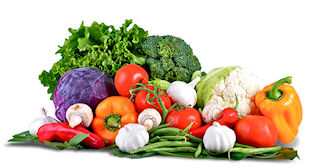|
Niacin, also known as vitamin B3, helps
Release energy from the foods we eat keep the nervous system and skin healthy
Top Niacin Rich Foods
Peanuts (over 100% DV)
Mushrooms (34% DV)
Green peas (15% DV)
Sunflower seed (19% DV)
Avocado (17% DV)
Top Health Benefits of Vitamin B3 (Niacin)
Healthy Skin
Dermatitis or irritated, flaky skin is a symptom of niacin deficiency. There is also some evidence that niacin may help prevent skin cancer and maybe even improve the appearance of wrinkles. Most of the effects of niacin on the skin have been seen when it is applied topically to the affected area, but getting sufficient niacin in your diet can also help with preventing irritation.
Cardiovascular Disease
High doses of niacin have been used to help improve cholesterol levels in people who cannot tolerate statins. Niacin can raise good cholesterol (HDL) by up to 35%. Niacin has also been shown to naturally lower blood pressure and reduce the risk of a heart attack and stroke.
Relief of Arthritis Pain
Since niacin plays a role in increasing blood flow to certain areas, it can also help relieve arthritis pain by encouraging blood flow to painful areas. It seems to help improve joint flexibility and reduce pain. Aim to eat niacin rich foods for this effect, but do not take high doses of the vitamin unless recommended by your doctor.
Niacin Flush
High dosages can produce a niacin flush on the skin, which can be painful for some people. One should not take high doses of niacin if they are not under the care of a doctor because excessive niacin can lead to liver damage and digestive problems.
DV is (Daily Value)
|

